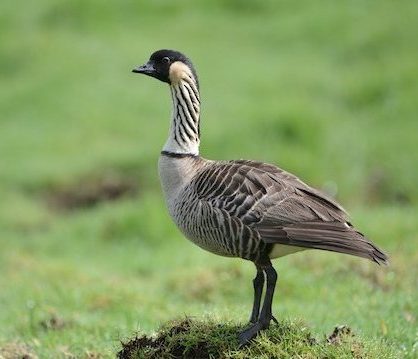Birdfinding.info ⇒ After teetering on the brink of extinction in the mid-1900s, the Nene (NAY-NAY) became a conservation success story. It is especially common on Kauai, where it can be found at Koke’e State Park and most wetland sites, including Hanalei and Kilauea Point National Wildlife Refuges, Kawaiele Waterbird Sanctuary, Kauai Lagoons in Lihue, the golf courses around Poipu, and Hanapepe. On Maui, it can usually be found at Haleakala National Park, and often at Kanaha Pond and Kealia Pond National Wildlife Refuge. On the Big Island, the Volcano Golf Course at Hawaii Volcanoes National Park is a consistent site.
Hawaiian Goose
Branta sandvicensis
Endemic to Hawaii, and resident on Kauai, Molokai, Maui, and the Big Island.
Populations have recovered significantly from a low in 1950 of about 20 to 30 in the wild plus 13 captive individuals up to approximately 2,500 in the 2010s. Kauai supports about 60% of the total population. In 2011, the populations elsewhere were estimated at 83 on Molokai, 416 on Maui, and 542 on the Big Island.

Hawaiian Goose in volcanic habitat at Haleakala National Park, Maui. (November 20, 2008.) © Brian McMorrow
On the Big Island, breeds at middle elevations from Hualalai and Mauna Kea south to southern slopes of Mauna Loa and Kilauea. Nonbreeding birds disperse both uphill to alpine meadows and downhill to coastal wetlands and golf courses.
On Maui, it was extirpated in the early 1900s, then reintroduced to Haleakala National Park in 1962. The Maui population breeds at middle and upper elevations of Haleakala. Some nonbreeders disperse downhill to coastal wetlands and golf courses.
On Molokai, it was extirpated in the 1920s, then reintroduced at Pu’u O Hoku Ranch in 2001.
On Kauai, it was evidently extirpated before European settlement, then accidentally reintroduced in November 1982, when Hurricane Iwa damaged the enclosure of a captive flock near Lihue. The escaped birds began breeding nearby. With the addition of some intentionally introduced birds, the population spread around the coastal lowlands islandwide, and have also spread to higher elevations.
On Oahu, it was extirpated in the early 1800s. Dispersal from Kauai and some peculiar circumstances have resulted in several small groups arriving on Oahu. Some have nested, and it seems to be in the process of colonizing the island.
Identification
A pale-brown goose with a black face, crown, and nape, deep-buffy cheeks, and a pale-buffy neck with furrowed black streaks.
Immatures resemble adults except that the face, crown, and nape are brown instead of black.
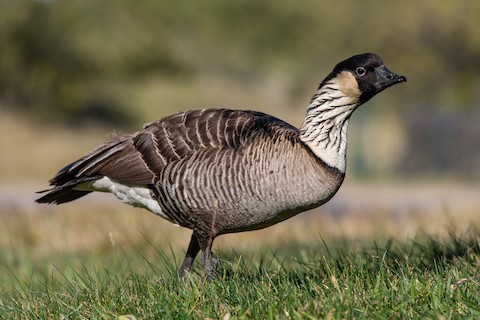
Hawaiian Goose. (Haleakala National Park, Maui, Hawaii; February 9, 2020.) © Graham Gerdeman
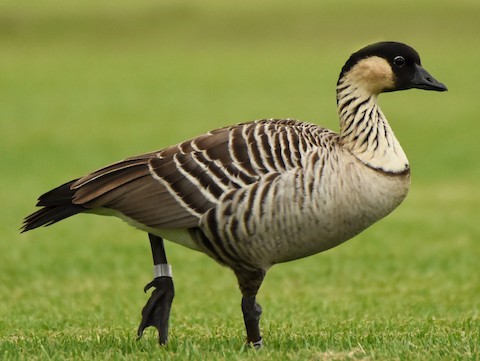
Hawaiian Goose. (Waikoloa Village Golf Club, Big Island, Hawaii; July 30, 2019.) © Steven Mlodinow

Hawaiian Goose. (Kilauea Point National Wildlife Refuge, Kauai, Hawaii; January 2, 2018.) © Derek Stokes
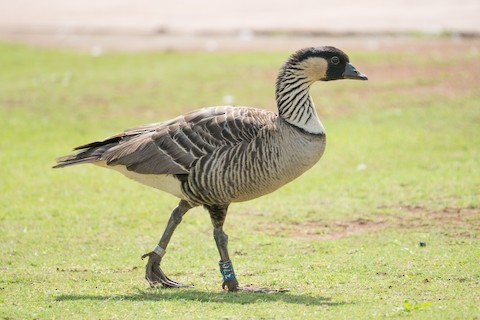
Hawaiian Goose. (Kilauea Point National Wildlife Refuge, Kauai, Hawaii; March 17, 2018.) © Kevin Pero
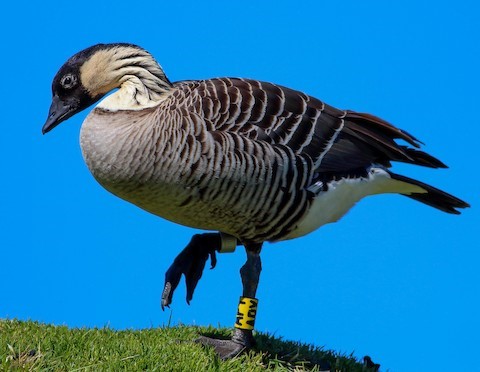
Hawaiian Goose. (Haleakala National Park, Maui, Hawaii; October 8, 2016.) © Paul Fenwick
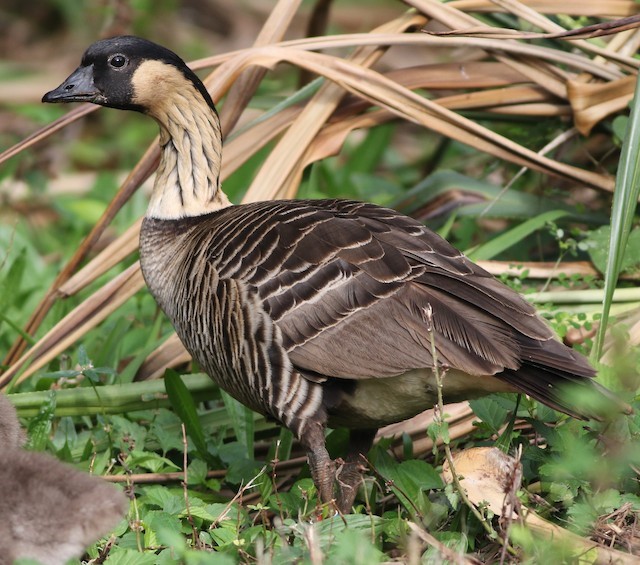
Hawaiian Goose. (Kilauea Point National Wildlife Refuge, Kauai, Hawaii; January 2, 2018.) © Derek Stokes
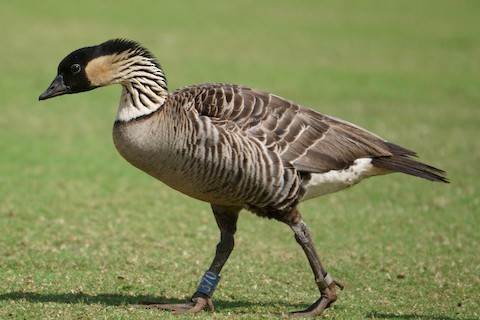
Hawaiian Goose. (Kilauea Point National Wildlife Refuge, Kauai, Hawaii; March 17, 2018.) © Kevin Pero
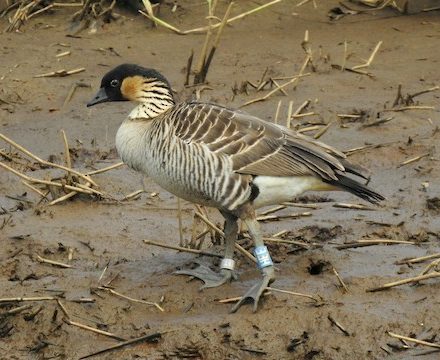
Hawaiian Goose, showing deep orange-buff cheeks. (Ohiki Road, Hanalei National Wildlife Refuge, Kauai, Hawaii; January 8, 2020.) © Joel Gilb

Hawaiian Goose, pair. (Kilauea Point National Wildlife Refuge, Kauai, Hawaii; November 5, 2009.) © Ken Langelier
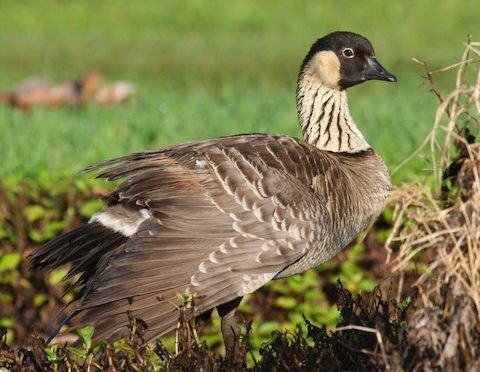
Hawaiian Goose. (Hanalei National Wildlife Refuge, Kauai, Hawaii; January 2, 2011.) © Nick Anich
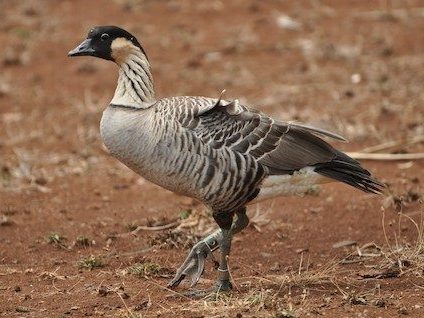
Hawaiian Goose. (Kilauea Point National Wildlife Refuge, Kauai, Hawaii; September 14, 2010.) © Matthew Cvetas

Hawaiian Goose. (Haleakala National Park, Maui, Hawaii; August 14, 2018.) © Eric VanderWerf

Hawaiian Goose, adult, close-up showing furrowed streaks on the neck. (Waiakea Pond, Wailoa State Park, Big Island, Hawaii; February 26, 2019.) © Jacob Drucker
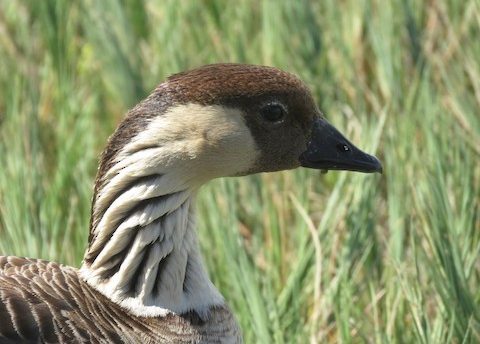
Hawaiian Goose, immature, showing brown face, crown, and nape. (Kanaha Pond Wildlife Sanctuary, Maui, Hawaii; December 17, 2019.) © Curtis Mahon
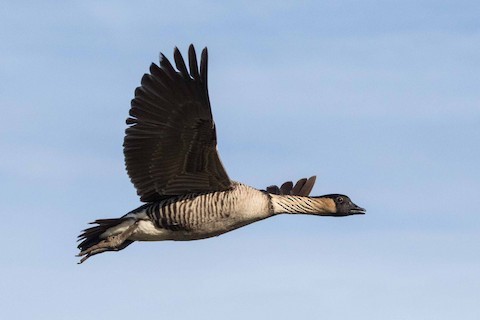
Hawaiian Goose. (Kawaiele State Waterbird Sanctuary, Kauai, Hawaii; December 12, 2019.) © Eric VanderWerf

Hawaiian Goose, showing upperparts in flight. (James Campbell National Wildlife Refuge, Oahu, Hawaii; August 4, 2018.) © Sharif Uddin
Notes
Monotypic species. Often known by its traditional Hawaiian name, Nene (NAY-NAY).
IUCN Red List Status: Vulnerable.
References
BirdLife International. 2017. Branta sandvicensis (amended version of 2016 assessment). The IUCN Red List of Threatened Species 2017: e.T22679929A112386209. https://dx.doi.org/10.2305/IUCN.UK.2017-1.RLTS.T22679929A112386209.en. (Accessed June 8, 2020.)
eBird. 2020. eBird: An online database of bird distribution and abundance. Cornell Lab of Ornithology, Ithaca, N.Y. http://www.ebird.org. (Accessed June 8, 2020.)
Pratt, H.D., P.L. Bruner, and D.G. Berrett. 1987. A Field Guide to the Birds of Hawaii and the Tropical Pacific. Princeton University Press.
Pratt, H.D. 1993. Enjoying Birds in Hawaii: A Birdfinding Guide to the Fiftieth State (Second Edition). Mutual Publishing, Honolulu, Hawaii.
Pyle, R.L., and P. Pyle. 2017. The Birds of the Hawaiian Islands: Occurrence, History, Distribution, and Status. Version 2 (January 1, 2017). http://hbs.bishopmuseum.org/birds/rlp-monograph/. B.P. Bishop Museum, Honolulu, Hawaii.
